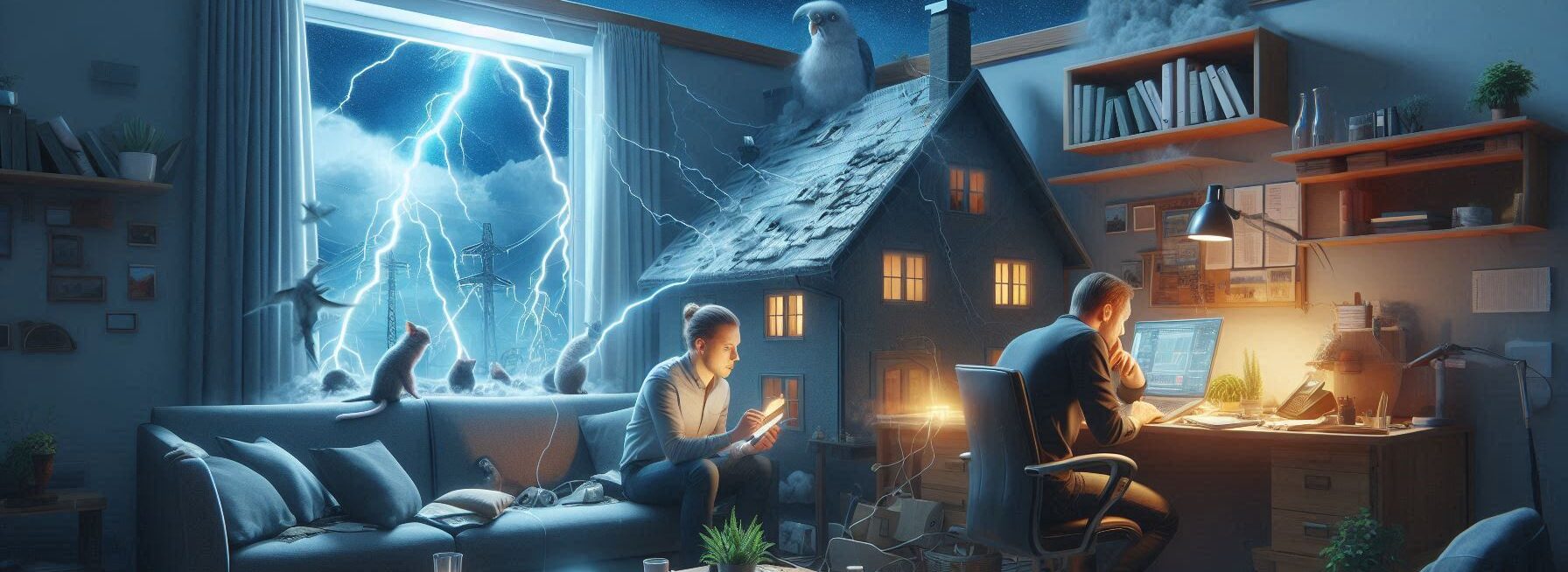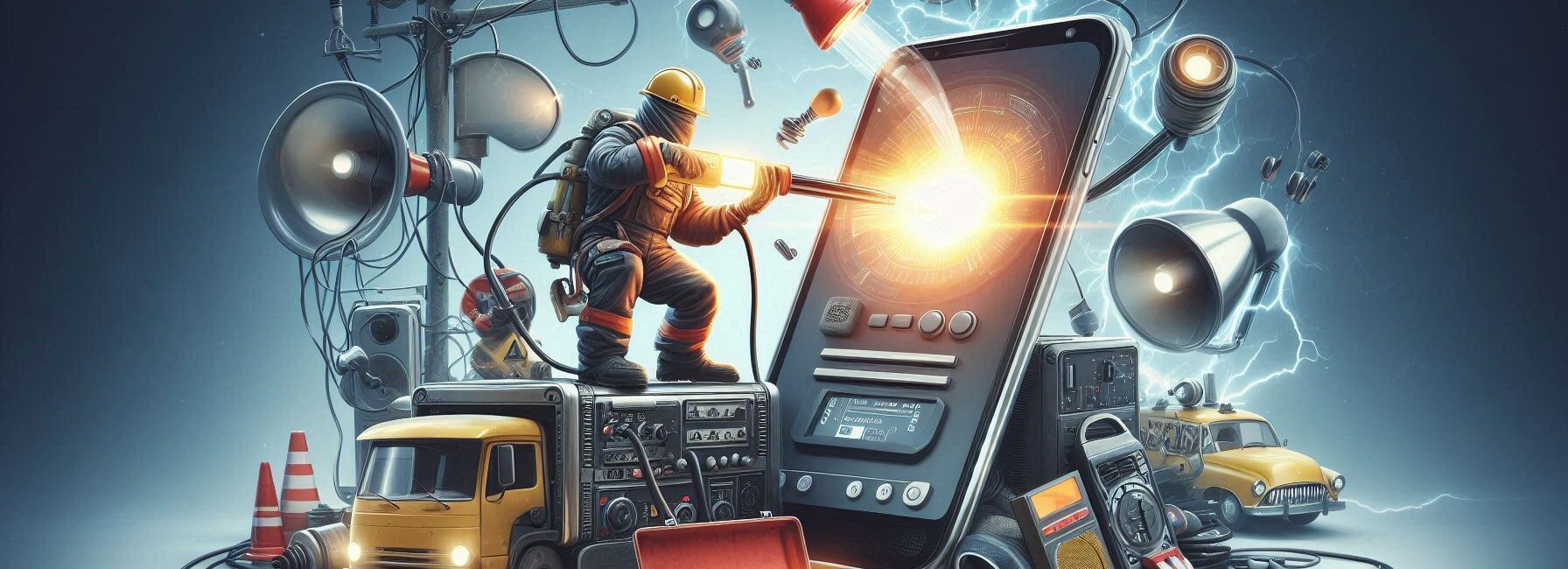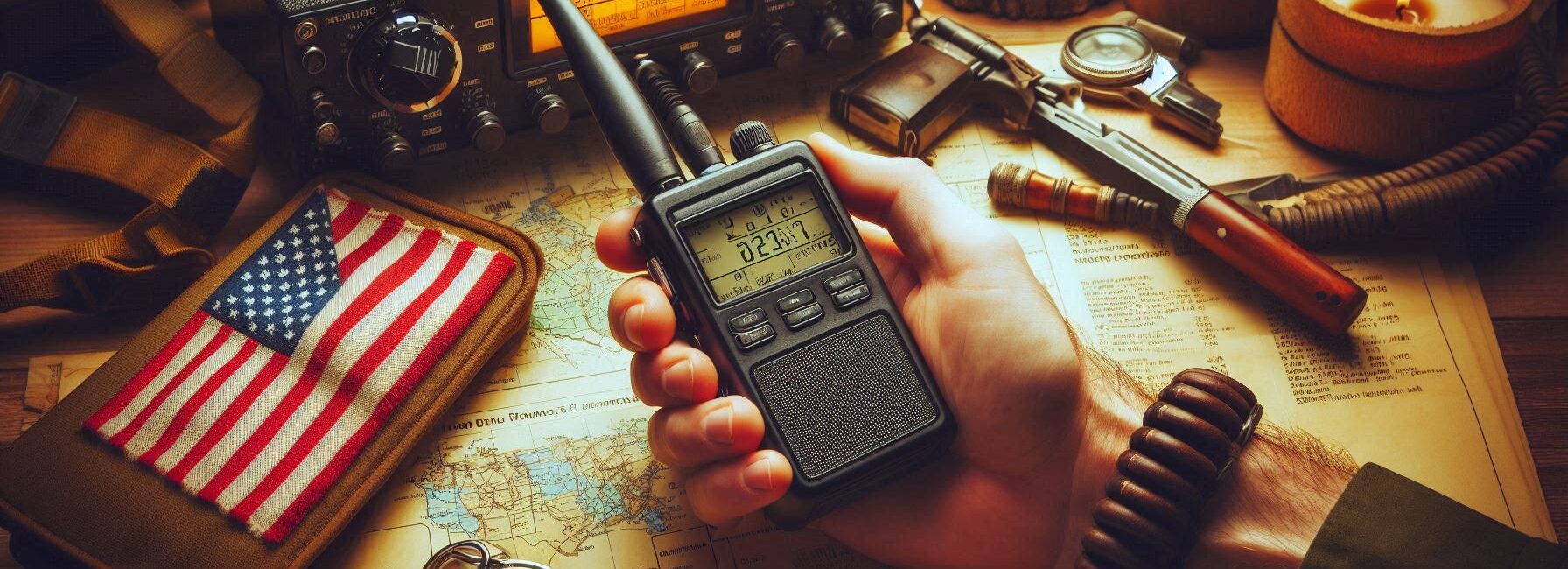Please Note: This post may contain affiliate links. If you click one of them, we may receive a commission at no extra cost to you. As an Amazon Associate, I earn from qualifying purchases.
Last Updated on November 1, 2025 by Kevin Collier
What do you think of when you think about survival? It could be making a shelter, starting a fire, or looking for food. But I have to say, survival communication is one of the most important talents that people don't talk about enough. What if you were out in the woods and suddenly lost sight of your trekking partner? What can you do to get their attention without dancing? That's when good ways to talk to each other come in handy.
Top Takeaways and Key Concepts
– Carry redundant signaling tools and keep them accessible: pea-less whistle (3 blasts), signal mirror, headlamp with strobe, hi-vis panel/tape, and a PLB or satellite messenger.
– File a trip plan with a trusted contact and set specific check-in times and a no-contact window that triggers calling rescue.
– Program your radio or sat device and practice concise calls: give exact location (UTM/lat-long), status, needs, and stay on channel after sending SOS.
– Conserve power to extend communication: keep devices warm and off until check-ins, use airplane mode, dim screens, and rotate batteries.
– Make yourself easy to find: move to high ground, clear a marking zone, build large contrasting signals or smoke, and use three-of-anything for distress.

Being able to talk to people well can make the difference between a nice trip and a full-blown rescue mission. So, get your favorite snack (I recommend trail mix; it's like sweets from nature) and get ready to learn about how to communicate when you're in danger.
The Importance of Pre-Trip Planning
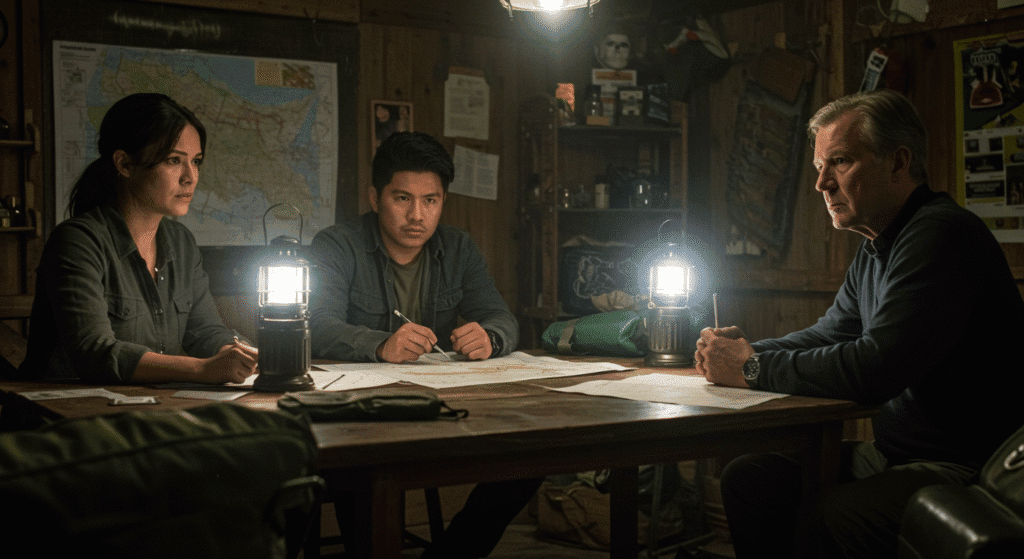
Let's start with planning for the vacation, because let's be honest, who doesn't like a good plan? It's highly important to get everyone together for a “survival chat” before going on any outdoor adventure. It's not just an excuse to consume more snacks; it's time to set some restrictions!
Talk about emergency signals that everyone knows about during this conference. If someone yells “Bear!” (which I hope never occurs), what should everyone do? Stop moving like statues? Do you climb trees? Or maybe simply sprint away like you're in an action movie? Setting these expectations ahead of time helps make sure that everyone knows what's going on when things get crazy.
You might also want to set up specific places to meet, such “the big rock” or “that tree that looks like it needs therapy.” Come on, we've all seen trees with sad faces and crooked branches. They just need some love! If someone gets lost, it's easier for everyone to remember where to meet if you pick locations that are easy to recall. It's a lot better than stating something ambiguous like, “Meet me somewhere near the trail,” which is about as useful as advising someone to find a needle in a haystack.
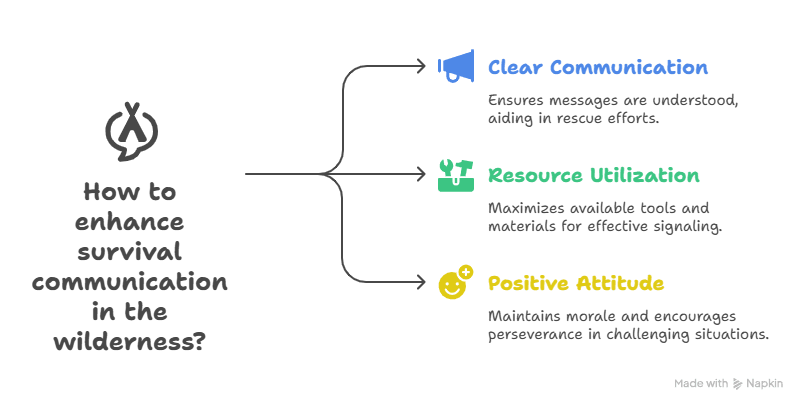
Think about how these places will seem in the open air. A big rock with moss on it? Great! A tree with a twisted trunk that seems like it could be in a horror movie? That's even better! You might also choose funny names that would make your journey more fun. People are more likely to recall a name that is silly. Who wouldn't want to meet up at “The Tree of Eternal Confusion” instead of just “the oak tree”?
*** Shop for Survival Gear - Tools - Kits ***
Survival Gear - Bags and Backpacks - Knives - Boots/Footwear - Communication
Outdoor Cooking - Gloves - Hydration - Dry Boxes - Water Filtration Systems
Tents - Sleeping Bags - First Aid Kits - Multi-Tools - Flashlights - Fire Starters
Navigation - Survival Food - Night Vision - Headlamps - Stun Guns - Binoculars
And here's another tip: make sure everyone knows exactly how far they can go before they have to come back to these meeting locations. When nature calls your name (and let's be honest, occasionally whispers sweet nothings), it's easy to get lost in exploring. Setting a sensible distance can keep you from accidentally going on an adventure into the unknown, where you might feel like you're in your own survival movie without the camera team.
Also, think about having a backup plan in case Mother Nature throws you a curveball. Knowing where to go instead can rescue the day if fog or rain makes it hard to see or if someone (Timmy, I'm looking at you) gets lost. You might call your second choice “The Rock That Looks Like A Duck.” This will make people laugh and make sure that no one gets lost and panics because they believed they were going to “the big rock.”
You can help keep your excursion exciting and not turn it into an episode of “Survivor: Family Edition” by setting clear meeting points and making them fun and memorable. Nothing ruins an incredible trek faster than learning that half the party has gone off on their own personal quest while attempting to find their way back home!
Non-Verbal Communication Skills
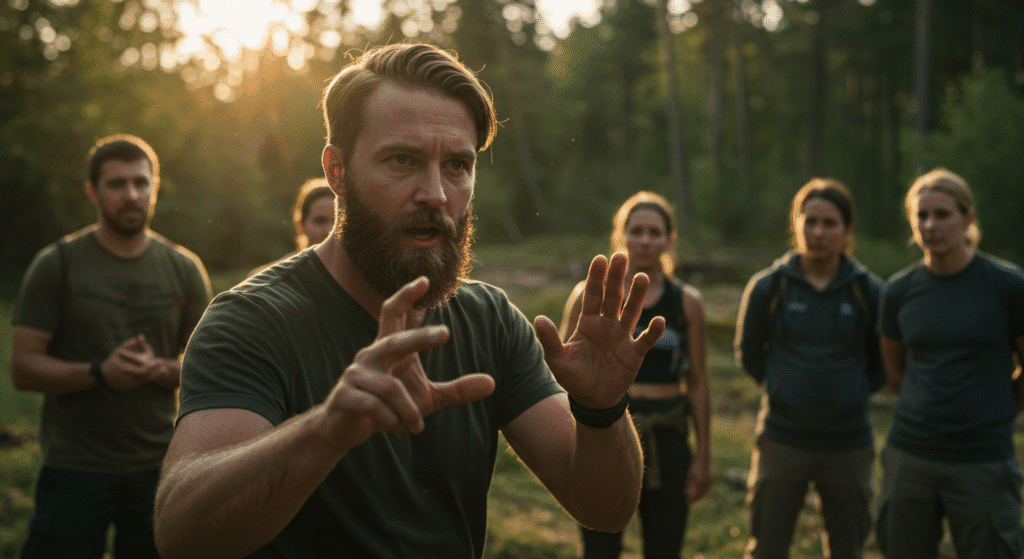
Let's talk about non-verbal communication now, because sometimes words just don't work, like when you accidently ingested too much insect spray while attempting to communicate something deep. When you're out in the woods and need to talk quickly without drawing too much attention to yourself, hand signals can save your life.
You may utilize simple gestures for everyday circumstances. For example, waving your arms could represent “come here,” and pointing at your watch could mean “it's time to go back before dark.” You might think it's crazy to rehearse these movements at home (believe me, I looked silly), but once you're out there with trees and squirrels critiquing you, you'll be glad you did!
Then there is body language. Isn't it interesting how much we say without saying a word? When you're leading a group, standing tall and confident might make you seem like you have authority. It's like you're channeling your inner mountain goat—strong, stable, and ready to take on any challenge! On the other hand, falling over and seeming perplexed doesn't make people trust you, even if you're freaking out over how many granola bars are left in the bag. No one wants to appear like they just found out that their favorite snack is gone for good!
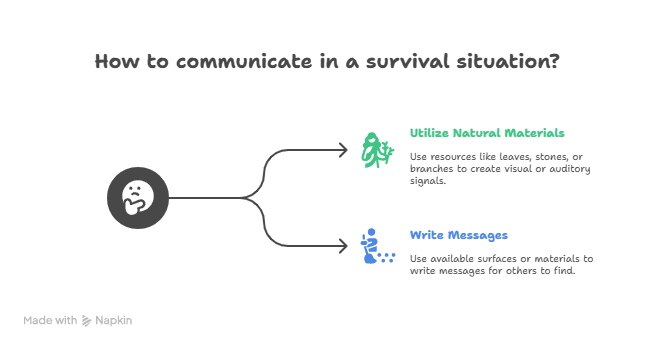
Picture this: you're hiking and someone suddenly asks you where the trail goes. Everyone will nod along as if you've just revealed the mysteries of the universe if you stand up straight, shoulders back, and answer with confidence. But if you hunch over and murmur something like “maybe that way,” your pals might start looking for a tree to hide under because they think something bad is about to happen.
The key is to look relaxed. I mean, think about it. If your hiking friends see you sweating bullets because someone lost the map or spilled water all over the emergency snacks (gasp!), they could start to panic too. You want to be the person that gives off the sense of “I've got this.” So take a big breath! You're not simply taking them through the woods; you're taking them on an adventure with lots of surprises along the way.
It's interesting that nonverbal cues can be really helpful for keeping spirits up on walks. A simple thumbs-up or smile can make someone feel better faster than uncovering a secret hoard of chocolate bars (and believe me, that's fairly fast!). People are more inclined to stay together and keep going when they feel good about you. They won't give up when they lose sight of that one trail marker that is hard to find.
On a different note, don't forget that making eye contact is really important! It demonstrates that you're interested and helps your group trust each other. People will feel more connected and less inclined to get sidetracked by butterflies or squirrels if they feel like they are genuinely being seen. Also, looking someone in the eye sends the message that “we're in this together,” which makes even the hardest times seem easier.
So, the next time you go hiking with friends or family, and let's face it, there will be problems, remember these body language recommendations. Like a magnificent pine tree in a sea of saplings, stand tall! Your bold stance may turn a possible disaster into a friendship, and it would also make sure that no one has an existential crisis over missing granola bars!
Technology: A Double-Edged Sword
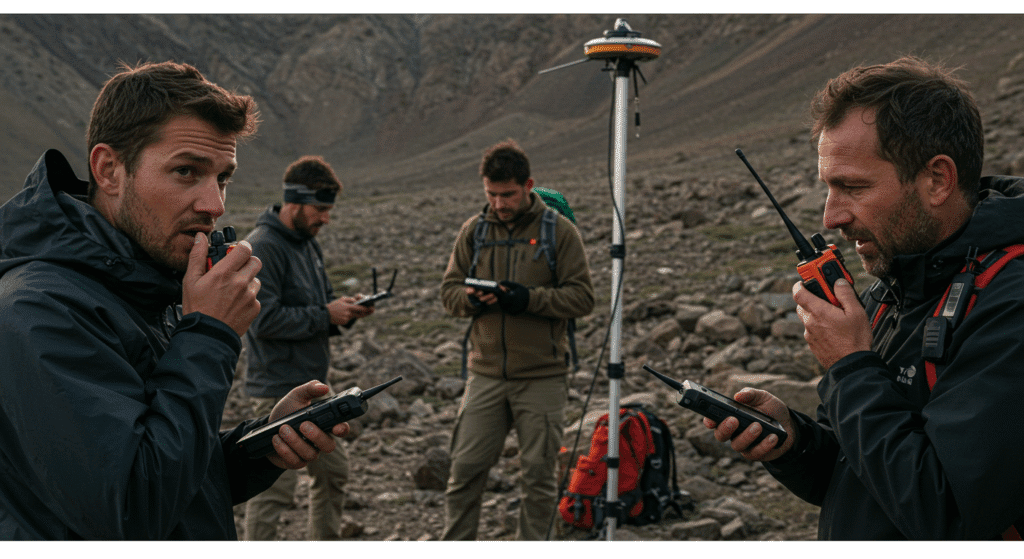
Technology is a big part of how we talk to each other these days, but is it always dependable? I guess we've all had that heart-stopping moment when our phone dies just as we're trying to send an SOS text. It's only reasonable to say that relying only on electronics can make us weak if they fail us at important times.
That being said, bringing along things like walkie-talkies or satellite phones can make your adventures even safer! Just make sure everyone learns how to use them correctly. There's nothing worse than fumbling with buttons while trying not to panic as Timmy runs off to chase butterflies again.

But keep in mind that technology should work with conventional approaches, not replace them completely. It's tempting to depend too much on our gadgets these days. I mean, who doesn't appreciate having a GPS take them around the woods like a personal tour guide? But when that Wi-Fi signal disappears faster than free pizza at a party—poof!—you can feel as adrift as Tom Hanks did in *Cast Away*, talking to Wilson (who, let's be honest, was a pretty excellent volleyball buddy).
Picture this: you're out in the great outdoors, enjoying nature's splendor, when your phone suddenly tells you it can't connect to the internet. It's time to panic! You pull out your device, only to find that it's not very useful at all. If you had learned how to read a map or find natural landmarks ahead of time, you would be walking confidently through the woods instead of frantically attempting to figure out which direction is north while squinting at your unresponsive screen.
Always have backup plans available so you don't end up like the next castaway looking for Wi-Fi. This means that you should bring a real map and compass with you, in addition to your phone. Believe me, there's something really rewarding about opening up an old-school map and drawing your route with your finger like you're on a quest for treasure. Also, there's less of a possibility that you'll get stuck in a dead zone where cell towers are only figments of our imagination.
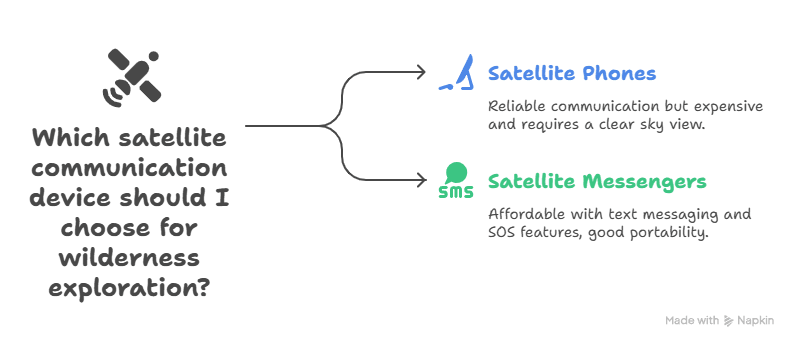
Knowing how to navigate the old-fashioned way can also help you appreciate nature more. You can really get into your surroundings when you're not stuck to a screen that keeps pinging you with notifications or looking for the closest coffee shop (because let's face it, coffee is life). You might see that hard-to-find deer that you would have missed if you had been peering at Google Maps. You'll hear the leaves rustling and feel the wind on your skin.
On a different topic, think about having ways to talk to people that aren't only tech equipment. If someone gets lost from the group, a whistle can be quite helpful because it carries far longer than yelling “Hey!” “Where did everyone go?” Don't forget about hand signals, either! They're like secret codes that friends use to talk to each other. They can keep you from shrieking across valleys when all you want is for someone to pass the trail mix.
So, in the end, use technology, but don't rely on it completely to stay alive. You can stay grounded (pun intended) even if Wi-Fi goes away by combining modern conveniences with tried-and-true methods, like reading maps and improving your navigation abilities. This way, you'll feel like you're not stuck like Tom Hanks when he thinks about his next discussion with Wilson!
Signaling for Help: When All Else Fails

So, let's pretend you've tried everything else—your phone is dead, Timmy has decided he likes living with squirrels better, and now you need aid right away! What do you do? This is where signaling techniques come in!
A whistle can be quite helpful because sound goes farther than our voices ever could. Believe me, no one wants to scream until they're hoarse to get attention. Three short blasts are a universal indicator of trouble, so put one in your pack or even around your neck if you want to show off!
If you're really trapped and don't have any tools or Timmy nearby, you might want to use the things around you in nature. When you're in a bind, nature may be a great partner in creativity! Picture yourself in the wild, like you're on a survival reality show, with just your wits and what Mother Nature has to offer. Don't worry! You can make big symbols on the ground with rocks, branches, or even leaves. These could help rescuers flying overhead find you.
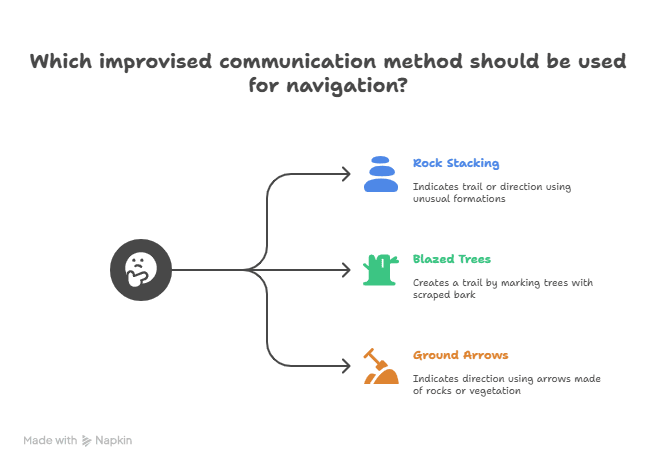
Before you start channeling your inner Picasso and making abstract paintings that would make art critics scratch their heads in confusion, let's speak about clarity. The idea is to design something that people can see and hear that says “Help!” instead of “What on earth is this?” Be ambitious! A huge SOS created out of sticks or stones is much better than a strange spiral pattern that can lead rescue teams to believe they have found an ancient alien landing site.
So, what do you do? First, choose a spot where your message won't get lost in the bushes. It should be easy to see from above. Think of it as making a huge billboard for planes that are flying by. Collect things like rocks or branches that have fallen and put them together in forms that are easy to see. For instance, a “X” can mean trouble, while “SOS” spelled out with logs will undoubtedly get someone's attention. Just think about how exciting it will be when someone finally sees your work. It's like shooting out a huge signal flare without having to start a fire!
If you have brightly colored things around you, such colorful clothes or gear, color can also make your signal more interesting. Use anything that is bright or reflecting that you have sitting around, like that neon green backpack you thought was cool. Put it flat on top of your rocks. The colors of nature will make it glow even more.
And don't forget about scale if you want to stand out! If your symbols are bigger, they have a better chance of being seen from far away. Don't just mess around with little rocks; get some bigger ones and make something that really stands out. We want those rescuers to be able to see our message from a long way away, not have to strain through binoculars to figure out if we're asking for aid or just showing off our modern art talents.
Last but not least, remember that time is very important when you make these signals. It's easy to want to take breaks for snack time (who doesn't love trail mix?), but getting your message out there should come first! You can rest now that you've made your masterpiece and shot those visual fireworks into the universe (or at least the sky). You know you've done everything you can to get people's attention.
So if you ever find yourself in a tough spot without tools (or Timmy), know that nature's canvas is there under your feet! Use rocks and branches carefully to spell out messages that are loud enough for anyone flying over to hear. This will keep people from thinking they've stumbled into an avant-garde museum instead of looking for missing hikers.
The Art of Listening
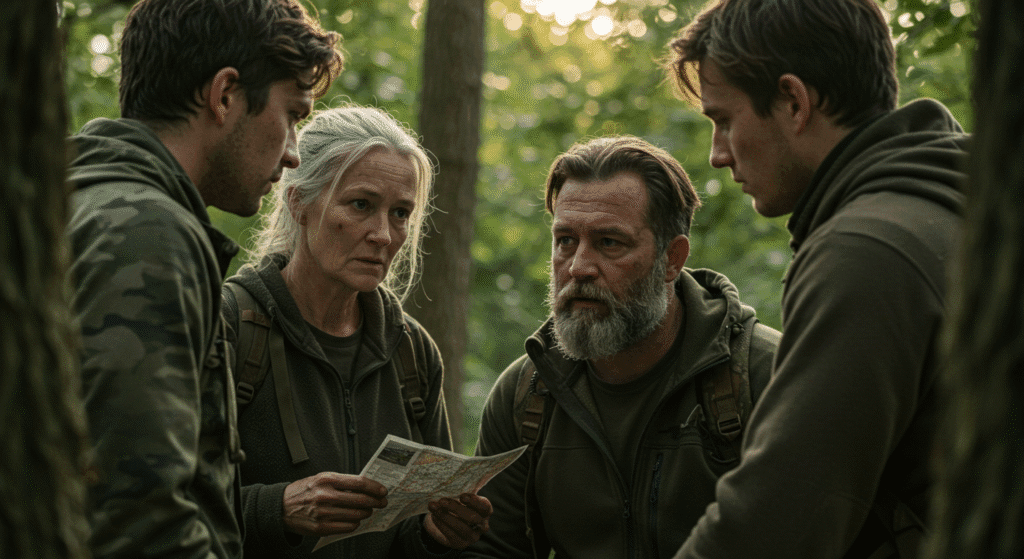
It's interesting because survival communication isn't just about talking; it's also about listening! When we pay attention, we can not only grasp instructions but also get hints from nature itself. For instance, paying attention could help you hear sounds that mean rain is coming or animals are around, which could change the choices you make while hiking!
Also, practicing active listening in groups helps people work together and get along, and it makes sure that everyone's voice is heard on outings together. No one enjoys feeling ignored after offering great ideas about which way to go to get to ice cream stands instead of mountains!
We may greatly improve our ability to spot possible threats early on by keeping our mouths shut and our ears open from time to time. This will stop them from turning into big problems later on. Imagine this: you're hiking with a group, and everyone is talking excitedly about the pizza party they had last weekend or the movie where someone survives against all circumstances. It's fun, but important sounds of nature might be getting lost in all the noise and laughter.

Could it be just a squirrel if you hear leaves rustling in the distance? Or maybe something even bigger? When you're busy talking about which superhero would win in a fight (spoiler alert: it's always Batman), those little sounds might easily go lost. You can be more aware of what's going on around you if you take a time to remain quiet and listen. Is there a strange lack of noise? That could mean that animals are close by or that the ecosystem isn't working well.
Now let's speak about being mindful of other hikers or even locals who might have useful information. Every now and then, it's good to stop talking and listen to what's going on around you. You may even start a conversation with someone who seems to know a lot. You can find out about bear sightings that have happened recently or trails that have been washed out by the storm. When you're outside, this kind of information is worth its weight in gold! Knowledge is power, so wouldn't you rather know that there has been a mountain lion sighting than find out after you've strolled right into its territory?
It's not just about being aware of danger; it's also about noticing things in your surroundings. The wind may carry smells or sounds that show the weather is changing, like rain coming or thunder rumbling in the distance. These things might have a big impact on your plans for the day. If you don't pay attention to these indicators while you're talking, you might not be ready when Mother Nature decides she wants to change things up.
And while we're on the subject of environmental cues, think about how different types of terrain sound too. When you walk on a rocky road, it makes a different sound than when you walk on soft dirt trails or mushy marshes. Uh-oh! If you hear squelching noises where they shouldn't be, That could signify that the ground is wet ahead, or even worse, that there is a muddy pit waiting for hikers who don't know about it, like a swamp monster ready to claim its next victim!
Taking those moments of silence makes us safer and makes our time outside better overall. We may enjoy nature more when we listen intently. For example, when birds sing sweetly overhead or leaves whisper secrets as they dance in the wind, it becomes part of our adventure narrative too!
So the next time you're hiking with pals amid beautiful scenery—and I know how hard it is to stop talking—try to vary it up every now and then. Take advantage of those peaceful times; they could save you from getting into problems down the road! And who knows what fascinating sounds you'll hear along the way? Maybe even something so interesting that it will make a great campfire story later!
Conclusion: Communication Is Key
To sum up—and I promise I'm almost done—the significance of communication for survival can't be stressed enough! Being able to properly express your views, whether through talking or smart hand signals shared with others when exploring the outdoors together, makes experiences much safer.
So the next time you go into nature's playground with a lot of munchies (and hopefully not losing track of Timmy), keep these tips in mind: they will help you have fun and be useful when you need them most!
Frequently Asked Questions
Why is communication so important in survival?
Clear communication prevents confusion, aids group coordination, and increases your chances of being found quickly in emergencies.
What should be discussed before starting a trip?
Set meeting points, emergency signals, check-in plans, boundaries, and responsibilities so everyone knows what to do if separated.
How can non-verbal communication help outdoors?
Hand signals, posture, eye contact, and visual cues allow silent coordination and reduce noise that could attract unwanted attention.
Is technology reliable for wilderness communication?
Devices help, but batteries die and signals fail—always back them up with analog tools like maps, whistles, and pre-set meeting points.
What is the universal whistle signal for distress?
Three short blasts is the widely recognized emergency call for help.
How can nature be used to signal rescuers?
Use rocks, logs, clothing, or cleared ground to form large symbols like “SOS” or “X” that are visible from above.
Why is listening a survival communication skill?
Listening reveals environmental threats, weather shifts, wildlife activity, and prevents missing important instructions from the group.
Suggested Resources
Survival Communications
https://www.survivalskills.com/survival-communications
The Ultimate Guide to Outdoor Survival
https://www.outdoorlife.com/ultimate-guide-to-outdoor-survival
How To Use Signals in Survival Situations
https://www.wildsurvivor.com/how-to-use-signals-in-survival-situations

Kevin Collier is a seasoned survivalist and expert in prepping and homesteading, contributing to WiseSurvive.com. With a deep-rooted passion for self-sufficiency and outdoor survival skills, Kevin shares practical advice, strategies, and resources to help individuals prepare for any challenge. His informative articles cover a range of topics, from essential survival techniques to sustainable living practices, empowering readers to thrive in any situation. Whether you're a novice or a seasoned prepper, Kevin's insights will inspire you to take charge of your readiness and build resilience for the future.

